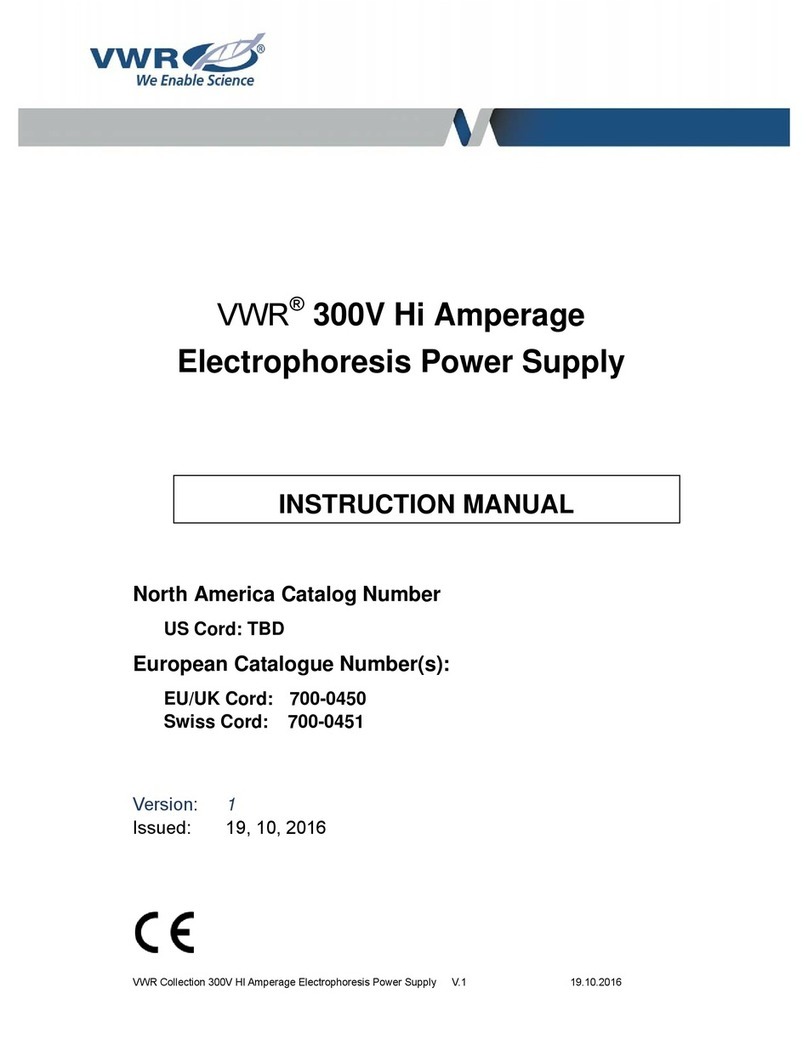89
7.3 Constant Voltage / ConstantAmperage
The Power Supply can be set to run with constant voltage
or constant amperage output, with the non-constant
parameter set as a limit.
Press the box “CONSTANT …” to switch between
“CONSTANT CURRENT” and “CONSTANT VOLTAGE”
running modes.
In constant voltage mode, the power supply will output the
set voltage, and the mAmp current value will fluctuate
(“float”) depending on the resistance of the load, up to a
maximum of the mAmp current setting that has been
chosen. The buffer concentration and size of the
electrophoresis gel box will dictate the resistance.
7.4 Automatic Cross Over
During an electrophoresis run, the power supply will
attempt to maintain the constant voltage or amperage
setting, depending on which parameter is set to
“CONSTANT”.
If, during a run, the non-constant parameter setting (limit) is
met due to the resistance of the load, the power supply will
automatically “cross over” so the non-constant parameter
will now be the constant and limiting parameter. A red
outline will appear around the new “constant” value.
In CONSTANT CURRENT mode, the power supply will
output the set mAmp current parameter, and the voltage
will fluctuate relative to the resistance of the load (buffer
concentration in the attached electrophoresis tanks) up to a
maximum of the voltage setting that has been chosen.
7.5 Maximum Power Limit
The VWR 300V/2APower Supply has a maximum power
output of 300 Watts.
Per Ohms Law:
Power (P) = Current (I) x Voltage (V)
If the maximum power is reached during an electrophoresis
run, the non-constant parameter will be limited to prevent
exceeding the maximum power output.
CAUTION: It is not recommended to run the power
supply at or near the maximum wattage for long periods, as
this can cause the power supply and gel tank to get hot.
Most standard electrophoresis buffer concentrations will not
have such low resistance that the current and voltage level
will come close to the maximum power limit.
8. Overview of Electrical Principles
Definitions:
Voltage: The amount of potential energy between two points
in a circuit.
Current: The time rate of flow of an electric charge, measured
in amperes.
Resistance: A material’s opposition to the flow of electric
current, measured in Ohms.
Power: The rate at which electric energy is transferred by an
electric circuit. Electric power is expressed in units of watts,
one watt is equal to one joule per second.



























